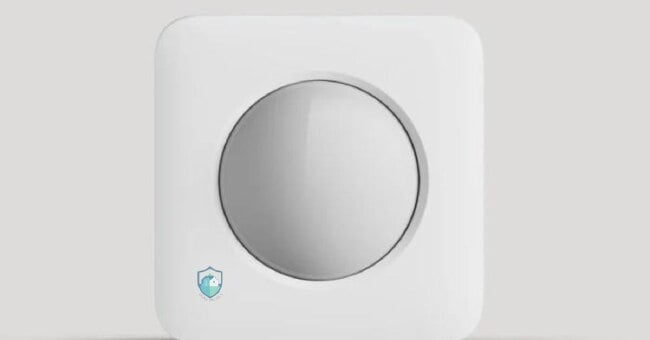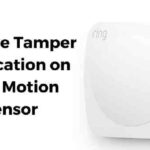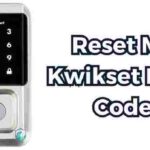Table of Contents
Hey there! If you’re reading this, you probably just got your hands on this new device and you are wandering how to set up SimpliSafe motion sensor.
Nice! These little devices are super handy for beefing up your home security.
But if you’re feeling a bit lost on how to get your motion sensor up and running, don’t sweat it.
This guide will walk you through the entire process from start to finish.
I’ll go over what SimpliSafe motion sensors are, why they’re so important for home security, where you should place them, and how to mount them.
Then I’ll explain how to connect them to your SimpliSafe base station.
I’ll also give you tips on adjusting the sensitivity so you don’t get false alarms, testing to make sure everything works right, and troubleshooting any issues.
By the end, you’ll be a pro at setting up SimpliSafe motion sensors!
What is a SimpliSafe Motion Sensor?
Before we dig into the nitty gritty of setting them up, let’s review what exactly SimpliSafe motion sensors are.
A SimpliSafe motion sensor is a small device that uses passive infrared (PIR) technology to detect movement in your home.
When it senses movement, the motion sensor sends a signal to your SimpliSafe base station.
This sets off your alarm system to scare away intruders and alert you and the authorities about the intrusion.
The motion sensors use heat sensors to detect movement. All living things give off heat, so when a person (or pet) moves within range of the sensor, it detects the change in heat signature.
SimpliSafe motion sensors are wireless. They run on batteries so you can place them anywhere without having to worry about wiring.
Why Are Motion Sensors So Important for Security?
Motion sensors are a critical part of any good home security setup. Here are some of the biggest benefits they provide:
- Deter intruders: The sound of your alarm going off is often enough to send an intruder running. Motion sensors help detect and scare off burglars.
- Alert you to threats: Motion sensors paired with your alarm system let you know immediately if there’s an intruder so you can take action.
- Give you peace of mind: Motion sensors do their job 24/7, so you don’t have to constantly be on guard wondering if your home is secure.
- Monitor your whole home: With wireless capabilities, motion sensors can be placed all around your interior and exterior. There are no blind spots!
- Customizable: SimpliSafe motion sensors have adjustable sensitivity to reduce false alarms. You can also set up alerts to go to your phone instead of triggering the full alarm.
- Easy to install: SimpliSafe motion sensors are totally wireless and use adhesive or screw mounts. No complicated wiring!
As you can see, motion sensors play a critical role in fortifying your home’s defenses. Now let’s go over how to get them set up properly.
How to Set Up SimpliSafe Motion Sensor: 5 Steps To Take
- Step 1: Where Should You Place Your SimpliSafe Motion Sensors?
- Step 2: How to Mount Your SimpliSafe Motion Sensor
- Step 3: Connecting Your Motion Sensor to the Base Station
- Step 4: Adjusting Motion Detection Sensitivity
- Step 5: Testing Your SimpliSafe Motion Sensor
Where Should You Place Your SimpliSafe Motion Sensors?
Finding the optimal placement for motion sensors is important. You want to eliminate any blind spots and reduce false alarms.
Here are some tips on picking the best motion sensor locations in your home:
- Entryways: Motion sensors placed near all exterior doors and windows can detect intruders right when they try to enter.
- High-traffic areas: Hallways, foyers, living rooms, and other commonly-used rooms are great spots for motion sensors to monitor.
- Corners: Mount the motion sensor in an interior corner of the room 4-5 feet off the ground. This gives it a wide viewing angle.
- Away from heat sources: Don’t place motion sensors near heaters, AC vents, light bulbs, or appliances. The temperature change can set them off.
- Not facing windows: Pointing a motion sensor directly at a window increases false alarms from movement outside.
- Away from pets: Try to position motion sensors away from pet food/water bowls, beds, and paths to avoid triggering.
Doing a walkthrough of your home and noting high-risk entry points and busy areas helps determine the best sensor placements.
For larger homes, you may need multiple motion detectors to cover all vulnerable spots.
How to Mount Your SimpliSafe Motion Sensor
Mounting your SimpliSafe motion sensor properly ensures it works effectively. Here’s how to get it installed:
What You’ll Need
- SimpliSafe motion sensor
- Phillips head screwdriver
- Drill with small drill bits (optional)
- Drywall anchors (optional)
Directions
- Remove the mounting plate from the back of the motion sensor.
- Hold the mounting plate against the wall where you want to install the sensor. Use a pencil to lightly mark the locations of the screw holes.
- If installing on drywall, use the drill to drill pilot holes for the drywall anchors. Insert the anchors.
- Hold the mounting plate against the wall, lining up the screw holes with the pilot holes or anchors.
- Use the Phillips head screwdriver to screw the mounting plate into the wall anchors or directly into studs.
- Align the motion sensor with the mounting plate and snap into place. The motion sensor will securely attach to the plate.
And that’s it! With the mounting plate securely screwed into the wall and the motion sensor snapped into place, installation is complete.
Connecting Your Motion Sensor to the Base Station
Your SimpliSafe motion sensor won’t do much good if it’s not connected to the main alarm base station.

Here’s how to wirelessly connect it:
- Make sure your SimpliSafe alarm system is armed.
- Press and hold the small button on the side of the motion sensor for 3 seconds. The sensor will beep and the light will start flashing green.
- Enter your system PIN code on the SimpliSafe keypad. This pairs the sensor with the base station.
- The motion sensor will beep again and the light will turn solid green when pairing is complete.
The sensor is now wirelessly connected! Any motion it detects will trigger your alarm system. Easy peasy.
Adjusting Motion Detection Sensitivity
SimpliSafe motion sensors have adjustable sensitivity to reduce false alarms while still detecting real threats.
If you’re getting false alarms from pet activity or other motion like trees blowing, try lowering the sensitivity.
Here’s how to change the motion sensor sensitivity in the SimpliSafe app:

- Tap the menu icon ☰ and select My Systems.
- Choose Device Settings.
- Select the motion sensor you want to adjust.
- Tap Sensitivity and drag the slider left or right to your desired level (low, medium, high).
Test out different sensitivity levels to find the sweet spot between detecting intruders and avoiding false triggers.
You can always adjust the sensitivity later on if needed.
Testing Your SimpliSafe Motion Sensor
Once it’s all hooked up, it’s important to test your motion sensor to verify it works correctly.

Here is how to test SimpliSafe motion sensors:
- Disable the alarm system temporarily using the app or keypad.
- Walk in front of the motion sensor’s field of view and wave your arms.
- The motion sensor’s light should turn on when it detects your movement.
- You should receive a testing notification on your phone or keypad.
If the motion sensor doesn’t detect you, triple check that it’s placed correctly, adjust sensitivity, and replace batteries if needed.
Be sure to re-enable your alarm when testing is complete! Regular motion sensor tests give you peace of mind that your system is working properly.
Troubleshooting Tips for SimpliSafe Motion Sensors
While SimpliSafe motion sensors are generally reliable, problems can arise. Here are some troubleshooting tips if your motion sensor acts up:
Issue: False alarms
Try:
- Adjust sensitivity level
- Point sensor away from windows
- Move pets away from sensor field of view
Issue: Sensor doesn’t detect motion
Try:
- Replace batteries
- Clean sensor lens
- Adjust angle/placement
- Test different locations
Issue: Sensor shows “offline” status
Try:
- Re-pair sensor with base station
- Move sensor closer to base station
- Replace sensor batteries
- Ensure base station has power
Issue: Mount becomes loose
Try:
- Use wall anchors in drywall
- Ensure mounting screws are tight
- Add a small piece of mounting tape
For any issues that persist, you can call SimpliSafe support 24/7 for troubleshooting help. But hopefully these tips take care of most problems!
Tips for Getting the Most from Your SimpliSafe Motion Sensors
Here are some handy tips and tricks to maximize performance of your SimpliSafe motion sensing system:
- Test weekly – Run weekly tests to verify sensors are working properly. Catch problems early!
- Keep it clean – Gently wipe down motion sensor lenses with a microfiber cloth to remove dust buildup.
- Mind the batteries – When battery power runs low, motion detection gets unreliable. Replace batteries every 1-2 years.
- Find the sweet spot – Take time to find the perfect sensitivity setting and placement to balance motion detection and false alarms.
- Consider pets – If you have rambunctious pets, aim motion sensors away from their food/water, beds, and favorite play areas.
- Account for growth – As vegetation grows over the summer, it can obstruct the sensor’s field of view. Trim back overgrown plants.
- Think ahead – When landscaping or remodeling, remember to keep motion sensors in mind so they aren’t blocked.
- Use as a deterrent – Let potential intruders know your home is protected by placing SimpliSafe window stickers on entryways.
With these tips, your SimpliSafe sensors will help keep your home safe for many years. Let me know if you have any other motion sensor questions!
Frequently Asked Questions about SimpliSafe Motion Sensors
What’s the best place to install my motion sensor?
The ideal spots are 4-5 feet off the ground in corners of rooms facing entryways and windows. Avoid pointing them at windows or heat sources like HVAC vents.
How many motion sensors do I need?
This depends on factors like your home’s size and layout. Most homes need 5-10 sensors placed in strategic spots to monitor all rooms and entryways.
Can pets trigger the motion sensor?
Yes – pets can trigger motion sensors if they’re within the sensor’s field of view. Try positioning the sensor above where pets frequent to minimize this. You can also adjust sensitivity.
How long does the motion sensor battery last?
The battery life is generally 1-2 years. SimpliSafe will send you alerts when the battery power runs low so you know when it’s time to replace it.
What’s the motion sensor detection range?
Detection range is up to 30 feet. Large-size rooms or areas may need multiple motion sensors to fully cover the space.
Can I use rechargeable batteries in the sensor?
SimpliSafe recommends sticking with standard alkaline AA batteries. Rechargeable batteries tend to have lower voltages that can impact performance.
What happens if the power goes out?
The motion sensors will continue operating normally for several hours thanks to the battery backup. The base station also has a 24 hour backup battery.
Can motion sensors get hacked?
SimpliSafe uses the highest level AES 128-bit encryption. This makes it extremely unlikely motion sensors could get hacked and compromise your system security.
Conclusion
And there you have it – everything you need to know to install SimpliSafe motion sensors like a pro!
Properly setting up and positioning these motion detectors takes a bit of work. But it’s well worth it for the peace of mind and top-notch protection they provide.
Whether you’re monitoring kids, pets, or looking out for intruders, SimpliSafe motion sensors have your back. And now you can tackle motion sensor setup with total confidence.
Let me know if you have any other home security questions! I’m always happy to help. Stay safe out there.





Pingback: SimpliSafe Base Station Not Connecting to Wifi: How To Fix It -